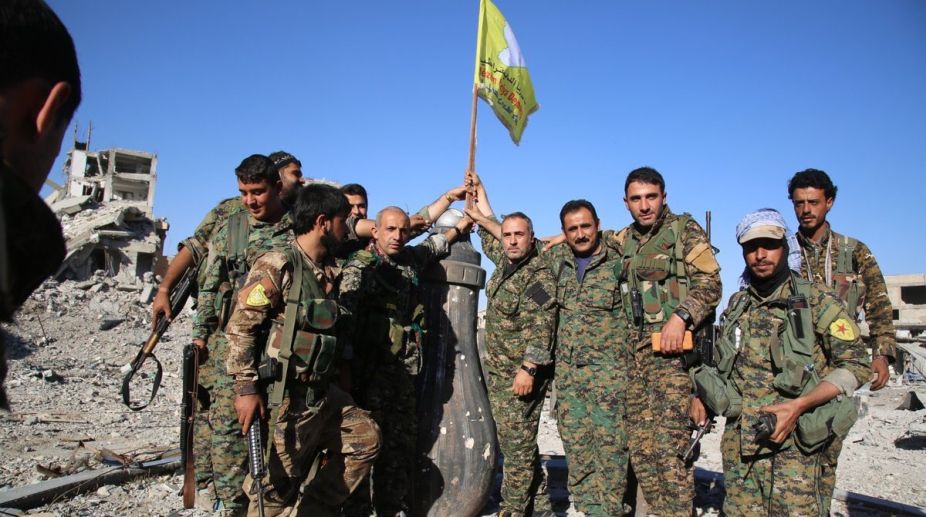Syria’s interim FM says maiden visit to Saudi Arabia ‘historic’
Syria's interim Foreign Minister Asaad al-Shaibani on Friday described his just-concluded visit to Saudi Arabia, his first official trip abroad in his current capacity, as "historic".

(Photo: Twitter)
Raqqa is about to fall – and once more, its imminent collapse has been brought about by Isis fighters who chose not to fight to the death. The Syrian Democratic Forces (SDF) – which is mostly Kurdish, is definitely not democratic and would have no force without US airpower – believe that they might hold the entire city within 24 hours and would thus erase the Isis ‘capital’ in Syria.
But the reports of more than at least 275 Isis fighters who are said to be Syrian and who have apparently been freed will greatly concern the Syrian government and army. Will they be allowed to wander into the Syrian desert and stage attacks on the Syrian army? Or go to join their comrades in Deir Ezzor, the government-held city which has still not been taken in its entirety by Syrian troops?
Advertisement
This is the second time in a week that Isis have surrendered en masse – the Kurdish-led ‘SDF’ says that only foreign fighters remain in Raqqa – and the assumption must be that ISIS is either content to give up the battle and fight again another day, or simply to find their way home and give up the struggle. The latter may be the more likely. But the Syrian government army is also only a few miles from Raqqa and has its own liaison office with the Kurds of the ‘SDF’ – and with the Russian air force – in a small location close to the Euphrates river.
Advertisement
They will want to know details of this largescale surrender – or large-scale freeing of prisoners which seems to be what is happening. The fighters are thought to have been taken initially to Hawi al-Hawa prison outside Raqqa where they are being interrogated – hopefully more humanely than were Isis prisoners captured by Shia Iraqi militias in Mosul.
Raqqa’s short truce also provided the moment for hundreds of civilians to flee the city, including the wives and children of fighters. So it seems that all the visions of heroic death and paradise conjured up by Isis leaders – many of whom are themselves dead – no longer appear to be worthy of their fighters.
The mere fact that they will talk to their opponents is an extraordinary step, although there is a third example of such a surrender: when the Syrians and Hezbollah fighters on Syria’s border with Lebanon allowed Isis fighters and other Islamists to leave the hills above the Lebanese town of Ersal earlier this year. There will, however, apparently be no “forgiveness” for the foreign fighters in Raqqa – it seems they will have to fight and die unless they too receive clemency by the besiegers of the city. What we do not yet know is how much of the ancient Abbasid city of Raqqa and its horseshoe walls and the gate of Baghdad built probably in the eighth century, survives.
So much of Syria’s antiquity has been damaged or destroyed – sometimes quite deliberately – in this war, that few historians bother any more to decry the destruction of the country’s cultural heritage. Isis has even lost the Syrian town of al-Mayadeen which it captured this summer and which the Syrian government army have now retaken. But while the war may have been ‘won’ in the desert, it is not over. Shells have once more been falling this weekend across Damascus, mostly in the old part of the city, and the Syrian news agency SANA has reported several deaths. A doctor said that there were four dead on Sunday and seven civilians with severe shrapnel wounds. Casualties have also, however, become casualties of the truth.
The American claim that 80,000 ISIS fighters have been killed in Iraq and Syria seems highly unlikely – 40,000 in Iraq and 40,000 in Syria seems a bit too neat a statistic.
The Kurdish fighters have named their operation to take Raqqa after one casualty they can confirm: their own Arab commander, Adnan Abu Amjad who was killed in August in the centre of the city.
Advertisement